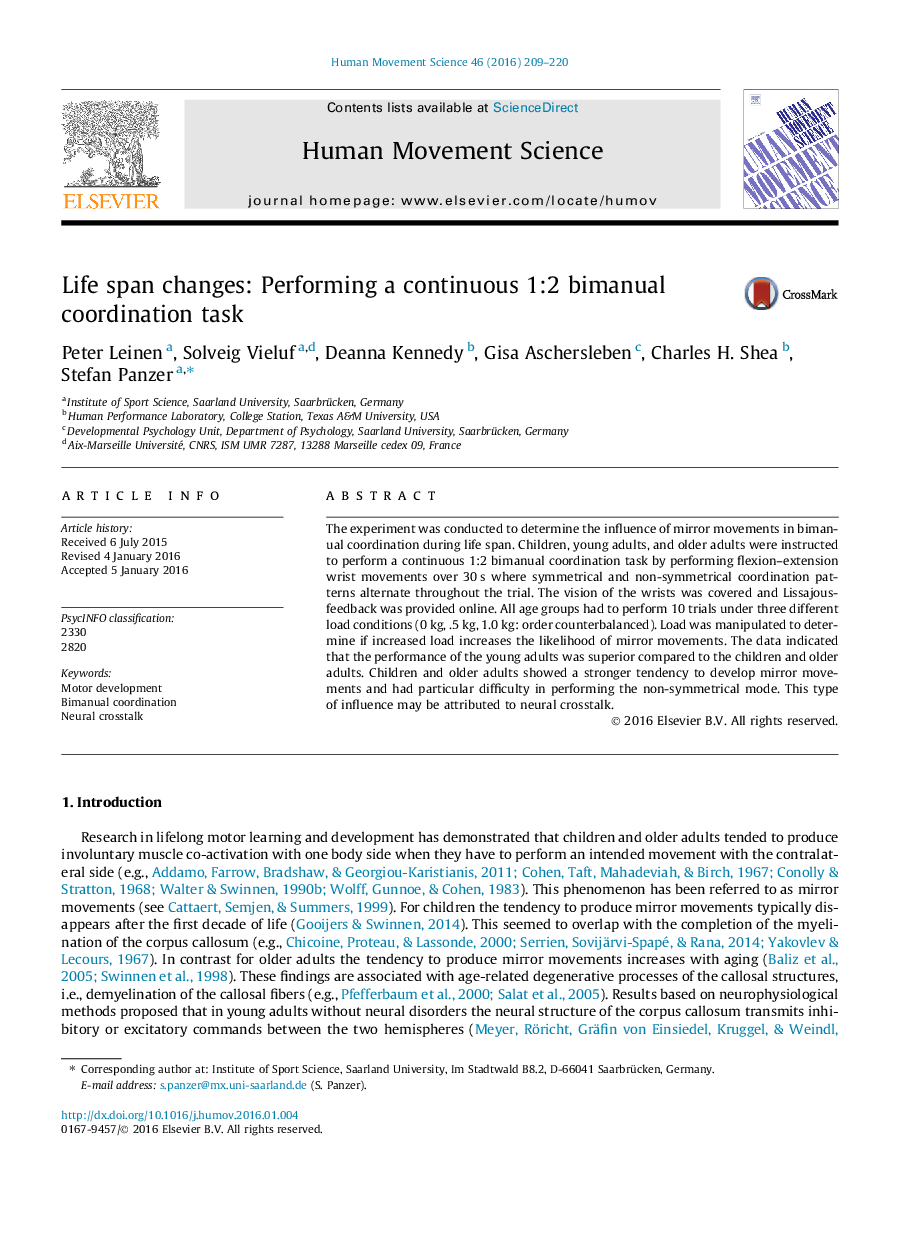| Article ID | Journal | Published Year | Pages | File Type |
|---|---|---|---|---|
| 928219 | Human Movement Science | 2016 | 12 Pages |
•During life span the bimanual performance followed like an inverted U-function.•Poorer continuous bimanual performance for the children.•Superior performance for young adults.•A drop in performance again for the older adults.•This type of influence may be attributed to neural crosstalk.
The experiment was conducted to determine the influence of mirror movements in bimanual coordination during life span. Children, young adults, and older adults were instructed to perform a continuous 1:2 bimanual coordination task by performing flexion–extension wrist movements over 30 s where symmetrical and non-symmetrical coordination patterns alternate throughout the trial. The vision of the wrists was covered and Lissajous-feedback was provided online. All age groups had to perform 10 trials under three different load conditions (0 kg, .5 kg, 1.0 kg: order counterbalanced). Load was manipulated to determine if increased load increases the likelihood of mirror movements. The data indicated that the performance of the young adults was superior compared to the children and older adults. Children and older adults showed a stronger tendency to develop mirror movements and had particular difficulty in performing the non-symmetrical mode. This type of influence may be attributed to neural crosstalk.
